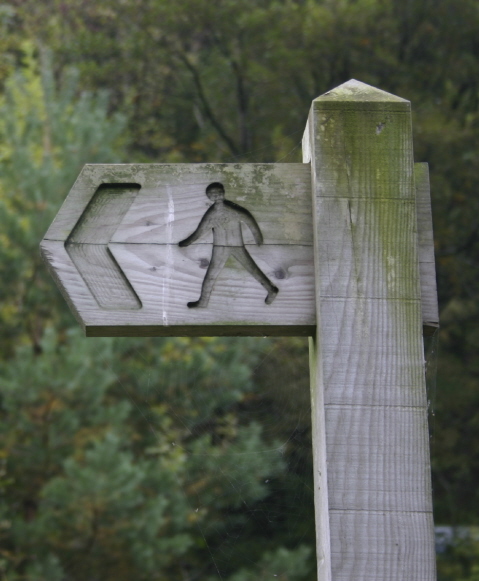
Article Contributed by Robert Skrob
The sheer number of e-commerce websites that exist today is enough to overwhelm any consumer and make the Internet marketing challenge for business owners seem insurmountable. Bob Regnarus, also known as “The Leads King,” has made a successful business out of helping business owners drive more traffic to their websites and inspire visitors to buy once they get there.
Bob was selected to offer his web marketing expertise in “Start Your Own Information Marketing Business,” a new book from the Information Marketing Association. This new book is an essential how-to guide for anyone interested in starting an information marketing business, and features insight from 12 of the biggest names in the industry. In it, Bob shares his secrets for maximizing online sales through search engine optimization and more.
Here is the Leads King’s 3 Basic Phases to Getting More Website Traffic and Sales Now
1. Understand What You Really Need from Your Website
Determining what your website can and cannot do is the first phase. Setting the right expectations for a site can help businesses invest their time and effort into marketing to target customers. The point is to avoid wasting time on people who will never become customers.
Remember your website should be a lead generation tool. So, you want to focus on targeted leads that are a perfect match for the products and services you provide. Make sure you build an opt-in option on your website’s landing page. This is where you make an offer in order to collect contact information from visitors. You might offer free, valuable information such as access to a newsletter or a complimentary lesson or session. This is important to your strategy for making building your list and starting a customer relationship that leads to more sales.
2. Build an Attractive Site With Your Objective in Mind
The second phase of a web traffic campaign is to build or alter a website so it fits the new strategy for generating sales leads and attracting target customers. An attractive website is easy to understand, and is interesting and engaging. It does not mean you should spend money on expensive graphic design or Flash animation – in fact Bob strongly advises you not to waste your money on elements that will not directly help you increase your website sales conversions. Instead, focus on communicating to visitors what your business offers and why they should be interested.
3. Drive Additional Traffic Through Advertising, SEO and Promotion
The third phase of the campaign is to make it easy for potential customers to find your website through search-engine optimization (SEO), article marketing, pay-per-click advertising and other advanced promotional tools.
Investing in online advertising is crucial to promoting your website, but there are also many low-cost strategies. Effective SEO tactics include creating external links, regular website updates and keyword saturation. Other little known channels for driving website traffic include promoting sites through blogs, articles and press releases. According to Bob you don’t have to be a technological wizard or a marketing genius to improve your search engine ranking and generate traffic to your website.
Follow Bob’s step-by-step directions and you will get more website traffic and sales. To learn more about SEO opportunities and discover how to create effective advertising campaigns with search engines look for more advice from Bob in Start Your Own Information Marketing Business. This information marketing how-to guide is available in bookstores now.
About the Author:
Robert Skrob, President of the Information Marketing Association teaches new entrepreneurs and small business owners how to build 6 and 7 figure income information marketing businesses simply by modeling top experts like Bob Regnarus. Now you can get his FREE Video revealing how 5 info-marketers easily created and marketed fast-selling products & how you can too. Get free access now at http://www.infomarketingstartup.com
Month: December 2008

A sole trader in the UK can operate a very basic accounting system. Provided supporting evidence is retained to show the basic accounts are realistic and the income and expenditure statement accurate for basic tax purposes sophisticated accountancy, debits and credits are not required. Basic accounts for a sole trader do not require the production of a balance sheet.
In order for a sole trader to be able to keep basic tax accounts certain conditions regarding the status of business accounts must be satisfied. Sales turnover should be under the vat threshold limit, a balance sheet not required, a business bank account not used and no employees employed. If the conditions are met then a simple income and expenditure statement is all that is required greatly simplifying the bookkeeping.
Self employed businesses are not required to maintain a balance sheet. If a balance sheet is maintained then to produce one the business needs to operate an accounting system based upon double entry bookkeeping and involving technical features such as debtors and creditors control accounts. Sole traders who do not need to produce a balance sheet can then maintain their basic accounting using single entry bookkeeping which is basically making lists of the financial transactions.
If a balance sheet is not produced the sole trader must keep a record of all capital expenditure items as part of the basic tax accounts to enable the capital allowances to be claimed each tax year. Receipts need to be retained as part of the basic accounts to enable the annual investment allowance to be claimed in the first year and writing down allowances in subsequent years.
More detailed financial records are required to be kept by the sole trader if they are vat registered. The vat threshold for the financial year starting April 2008 is £67,000. Part of the vat rules state that when a business is vat registered they should maintain an audit trail of transactions to support the vat return.
A sole trader does not have to operate a business bank account however if a business bank account is used then accounting records should be kept as the taxation authority, HMRC can ask to see details of the account. This inspection is to verify the transactions support the basic accounts produced. If a business bank account is not used then HMRC do not have a statutory right to view the sole trader personal bank account and that personal; account does not have to be a feature of the sole trader basic accounts.
When a sole trader has employees then as an employer a PAYE system is required which involves maintaining accurate wages records of employees, gross wages, income tax and national insurance deductions and net pay. Various PAYE records must also be maintained such as the working deductions sheet and also payslips must be issued to employees. The payroll records form part of the financial accounts of the sole trader who would actually be better called self employed if they have employees.
In the circumstances where a sole trader has no employees, is not vat registered and does not maintain a business bank account then formal accounts are not essential and a simple income and expenditure account statement can be produced. It is still essential that those sole trader basic accounts are supported with copies of invoices given to customers or records of amounts taken plus documentary evidence to support the payments made to suppliers.
On the sales side the basic accounting can consist of a list of the sales which when totalled produces the sales turnover of the business which is the income side of the income and expenditure statement. As not all sales may be received at the time of sale it is useful to keep a record of the date of the sale, the customer, amount and when and how much the customer has paid for credit control purposes.
Similar to the income side the expenditure can consist of a list of the amounts paid out to suppliers. It is advisable to perform a small amount of analysis of this expenditure as when reported on the self employed tax return the expenditure may need to be analysed according to the type of expense. All expenditure items claimed as business expenses should be supported with documentary evidence of that expense for basic tax purposes.
At the end of the financial year the sole trader income and expenditure account statement will state the total sales with the expenditure side being a list of all the expenditure by type of expense including any capital allowances claimed. Total the expenditure and deduct the total from the sales turnover to produce basic accounting record showing the net taxable profit.
A simple method of keeping the information to produce the income and expenditure account statement is to use accounting software spreadsheets with preset columns for sales and the expenditure types. The sole trader should also consider maintaining a separate list of the assets purchased as part of the basic tax accounts.
 Terry Cartwright qualified as a Chartered Management Accountant and Chartered Company Secretary in 1971. A successful business career followed as Head of Finance for major companies in the UK and several consultancy appointments. In 2006 he created DIY Accounting producing Accounting Software for self employed and small companies that use simple accounts spreadsheets to automate tax returns.
Terry Cartwright qualified as a Chartered Management Accountant and Chartered Company Secretary in 1971. A successful business career followed as Head of Finance for major companies in the UK and several consultancy appointments. In 2006 he created DIY Accounting producing Accounting Software for self employed and small companies that use simple accounts spreadsheets to automate tax returns.
Become A Possibility Thinker

“Whatever the mind of man can conceive and believe, it can achieve.” – Napoleon Hill, Think and Grow Rich
When you consider new ideas or change, do you feel an immediate response of resistance or fear?
Do you have the negative habit of looking at all the reasons why something might be too difficult or impossible to achieve so you can say no?
When we look at life through the narrow viewpoint of fear, we can miss seeing possibilities when we are focused on problems and obstacles.
Instead become a possibility thinker.
Consider something in your life that you want that seems out of reach or impossible. Notice all the reasons and excuses for why you believe something can’t happen. Have you collected evidence to back up that conclusion? In other words, are you looking at the past with the expectation that past experiences ALWAYS repeat? So, why bother dreaming, right?
What if what you desire as impossible were really possible? Perhaps some part of what you desire is currently out of reach and there are some things within your grasp that you might be dismissing because you are negating the whole picture. Ask yourself, “What about this is possible?”
Create a list of all the things that might make having what you want…. possible. Add everything and anything you can think of even if it seems far out. Here’s your opportunity to dream and open your mind to imagine the best possible options and solutions coming to you. In that way, you shift from constricted and limited thinking into a more expansive viewpoint where there is more room thing to flow into your life.
Tune into your inner wisdom, intuition, and instincts to follow those inner nudges that you become aware of that might be showing you the way to bring solutions and opportunities to have more of what you want and less of what you don’t want.
I have found that taking the first step opens the door to the next. Continuing forward one step at a time will move you closer to your dreams and desires. Remember to invite the Universe to work out the “how” and continue to show up by taking action.
Keys To Dealing With Problems

Here’s a question that many people have asked me,” Adam, do you face any problems?” Here’s my reply to this question, “I have more problems than you.”
Many people have these beliefs, that the more successful you become, the less problems you will have. They also believe, the more money you make, the fewer problems you have. Lastly, if you can make all the money in the world, you will have no problems.
In fact, through my own experience, the more success you have, the more problems you will face. The more money you make, the more problems you will encounter. I can confidently say that I have more problems than anyone of you reading this.
Using myself as an example, I get worried about 80 staff every single month. I worry about my businesses and my programs not meeting the sales mark, not generating enough revenue
I worry about $300,000 worth of overheads each month, and I worry about customers complaining.
I also have to deal with internal relations in my businesses and companies.
There are partnership issues, issues with overseas partners and businesses. There are also issues of staff conflict within my companies.
Do you now believe I have no problems?
So the important question to ask is, “What’s the best way to deal with problems in life”?
The key is to address your belief about what a problem means.
If you see a problem as something that is there to stop you, there to make life difficult, you know what, you are going to be really miserable.
Here’s my belief about problems.
I believe problems are doorways to opportunities. Behind every problem is an opportunity to learn more and to make more money. I believe problems are here to teach us lessons.
Everybody has problems, so its more important to learn how to deal with those problems and get stronger over time.
Solving one problem at a time and becoming stronger and dealing with your own problems is essential compared to, sweeping them under a carpet only to eventually realize that everything is a big mess.
Clean things up step by step and you will find that things are much clearer for you.
Here’s the last key and this has helped me face and deal with the problems I face.
I treat it life as a game. Every time I encounter a problem, I always feel that behind every problem is an opportunity to learn more or to make more money. I reframe problems in this manner that is why I love problems
Lastly, I am not going to fool you saying that whenever I face problems, I never get upset. I do. I do get upset sometimes. It’s a human reaction.
It’s only natural. Only a robot can be able to not be upset.
When I get upset over my problems, I only allow myself 20 minutes to be upset. So for that 20 minutes, I get really pissed off, I get really angry, I curse the whole world, I blame everybody.
After 20 minutes, I take responsibility for it. In this way, I have released my frustrations but at the end of the day, I take responsibility.
To conclude, the only time you are not going to have problems is when you are in the graveyard. So be grateful for your problems, learn and view them as opportunities for improvement. You’ll be better equipped towards tackling your problems this way!

Here are some business failures which i have experienced in my time from running my businessess which have served as great lessons for myself which i believe will benefit you.
I have lost a quarter million dollars in one year that was invested in an Interior Design Company. The whole business went bankrupt. One of the lessons learnt from this failure was in the choice of my partner. I chose the wrong partner.
Here’s a small pointer about finding partners. People always ask me this question, is it good to work with friends? The answer is Yes and No.
In fact, I would say it’s better to work with people whom you are not friends with in the beginning, but you become friends in the process. When you work with friends, you tend to be very similar. You tend to have similar interests, passions and hobbies.
In addition, there are a lot of expectations already preset, assumptions and so on.
In this way, you don’t make it a professional business. It’s the same with family. I don’t know about you, but I would never ever allow anyone in my family to work in my business. Reason being that feelings always get in the way. How are you going to fire your cousin? Or how are you going to fire your friend?
Here’s another lesson learnt. I went into a business that I didn’t have knowledge about and it wasn’t within my circle of competence. I knew nothing about interior design. I had no passion for interior design. I just went in because I was greedy. And that’s what killed me.
So the lesson is to not go into something you have no passion and interest for.
Greed was also one of the lessons I learnt that resulted in me failing. What happened was that when I started, I was given a lot of nice projections from my partner. 1, 2, 3 million dollars in a year, these sort of projections.
I got so excited by the numbers, that there were dollar signs in my head. And the moment there were dollar signs, you get so greedy, and logic goes out of the window leading you in making all the stupid mistakes.
So right now, I always say that when you start a business, expect the best but plan for the worst. Whatever projections people give you, take 50% off. And if after you take 50% off, you can still make money, go for it. So be really conservative in your planning but at the same time, set high goals for it.
Presence in the business is also very important. Focus and Presence.
Someone must be able to be the leader and be able to be in the business 150% of the time and be really focused in that business.
One of the problems with my previous interior design company was this. My partner was not a businessman, he was a designer. He was a great designer but he couldn’t run a business.
And he expected me to be that businessman to drive that business which I couldn’t fulfil because I was running 4 other companies at that point of time.
So that’s why the company collapsed. So you need a key driver, you need someone who is business-focused, who knows marketing
very well, who knows accounting very well, who’s very good at leading the team.
These are some of the lessons that I have learnt from running my business. Hopefully it will give you the reader some insights that you will be able to apply in running your own successful business.